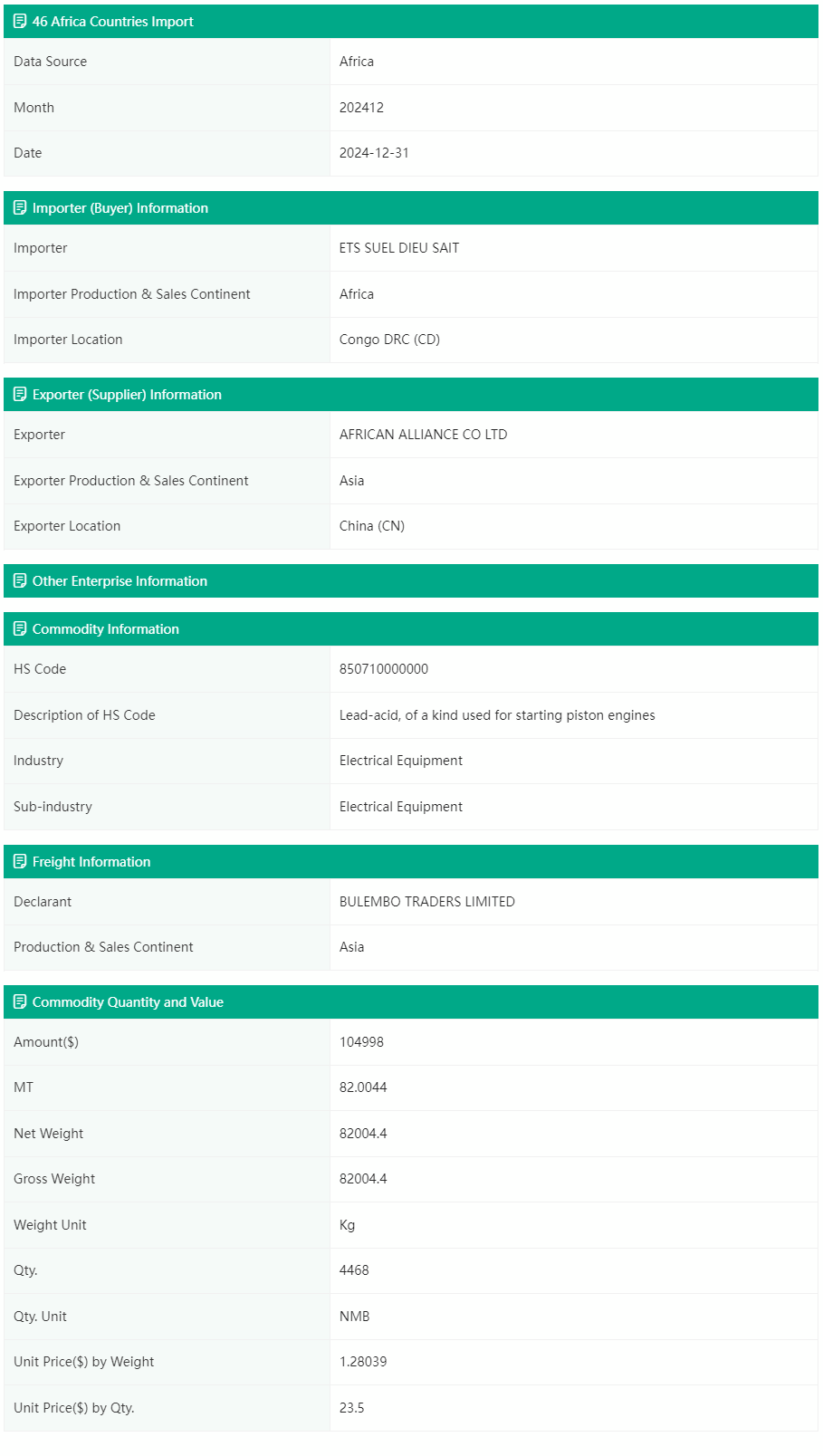Please Sign in to view recently saved searches.
The 46 African Countries participating in China's Belt and Road Initiative span across North, West, East, Central, and Southern Africa. These nations collaborate with China in infrastructure, trade, investment, energy, and agriculture. These countries include Algeria, Egypt, Ethiopia, Angola, Benin, Botswana, Burkina Faso, Burundi, Equatorial Guinea, Togo, Eritrea, Cape Verde, Gambia, Republic of Congo, Democratic Republic of Congo, Djibouti, Guinea, Guinea-Bissau, Ghana, Gabon, Lesotho, Liberia, Libya, Rwanda, Madagascar, Malawi, Mali, Mauritius, Mauritania, Morocco, Mozambique, Namibia, South Africa, South Sudan, Niger, Nigeria, Sierra Leone, Senegal, Seychelles, São Tomé and Príncipe, Eswatini, Sudan, Somalia, Tanzania, Tunisia, Uganda, Zambia, Chad, and the Central African Republic.
Through the Belt and Road Initiative, these nations are closely integrated with China's economic and social development. For 11 consecutive years, China has been Africa's largest trading partner and one of its main sources of investment, contributing over 20 percent to Africa's economic growth. The Belt and Road Initiative has provided African countries with opportunities in infrastructure development, energy resource exploration, and broader economic cooperation, significantly boosting their development.
Key Features of China-Africa Trade and Cooperation
1. Strong Economic and Trade Ties
China remains Africa's largest trading partner, with bilateral trade volume steadily increasing. China is also a major investor in Africa, focusing on mining, manufacturing, and agriculture.
2. Infrastructure Development
China has built extensive infrastructure across Africa, including highways, railways, ports, and airports. Notable projects include the Mombasa-Nairobi Railway in Kenya and the Addis Ababa-Djibouti Railway. Many African countries have benefited from Belt and Road Initiative projects, enhancing their economic growth.
3. Resource and Energy Cooperation
China collaborates with African nations on oil, gas, and mineral resource development, with Angola and Nigeria being major oil exporters. Renewable energy projects such as solar and wind power are also expanding under the Belt and Road Initiative.
4. Cultural and Technological Collaboration
China offers educational scholarships and vocational training to African professionals. Cultural and tourism exchanges between China and Africa continue to grow.
Major Trade Sectors
African Exports to China
African countries primarily export minerals such as copper, aluminum, iron ore, and uranium from the Democratic Republic of Congo, South Africa, Zambia, and Guinea. They also export energy products like oil and natural gas from Angola, Nigeria, and Algeria. Agricultural goods such as coffee, cocoa, sesame, cashew, and soybeans come from Ethiopia, Ivory Coast, and Tanzania, while seafood products like lobster and tuna are exported from Mauritius and Seychelles.
In recent years, African exports to China have diversified beyond raw materials to include processed agricultural products such as South African wines and Kenyan tea.
Chinese Exports to Africa
China exports machinery and equipment such as excavators, power equipment, and construction machinery to support Africa's infrastructure boom. Other major exports include vehicles such as cars, motorcycles, and trains, electronics including mobile phones and home appliances, and textiles like clothing and footwear.
Chinese brands such as Tecno, Itel, and Huawei dominate African markets. There is also a growing demand for green energy equipment, including solar panels and electric vehicles, as African countries move toward sustainable energy solutions.
Trade Models and Cooperation Mechanisms
Some African nations, including Egypt and South Africa, are exploring free trade agreements with China. Countries such as South Africa and Nigeria are increasingly using the Chinese yuan for trade transactions. The Belt and Road Initiative combined with the African Continental Free Trade Area is expected to enhance trade liberalization and reduce tariff costs.
2024 China-Africa Trade Performance
Total trade volume between China and Africa reached 2.1 trillion yuan in 2024, marking a 6.1 percent increase from the previous year and setting a new record. China's exports to Africa totaled 1.27 trillion yuan. Key growth sectors included electric vehicles, which saw an increase of 104.8 percent, textile materials, which rose by 83.7 percent, and ships and vessels, which grew by 64.4 percent.
Over the past 20 years, China-Africa trade has maintained an average annual growth rate of 14.2 percent, significantly outpacing China's overall trade growth rate of 3.6 percent. Nearly half of African nations experienced double-digit growth in trade with China, highlighting the positive impact of the Belt and Road Initiative on African economies.
China and Africa are expected to strengthen supply chains by promoting localized production and adding value to exports. China is also encouraging the import of more African agricultural and processed goods while expanding financial cooperation through the use of the Chinese yuan in trade settlements.
Digital trade and e-commerce platforms such as Alibaba and Pinduoduo are facilitating cross-border transactions, while green energy initiatives and the adoption of electric vehicles are expected to drive new areas of collaboration.
As trade diversifies and becomes more sustainable, the partnership between China and the 46 African nations in the Belt and Road Initiative will continue to create economic and technological opportunities for both regions.
The trade data of the 46 African Countries provided by Blooming is updated periodically. It mainly includes information about importers, exporters, goods, freight shipments, as well as information on the quantity, price, and value of traded commodities (such as transaction value, transaction volume, unit price, etc.).
The trade data of these 46 African countries serves as a reference basis for global multilateral trade cooperation. It enables us to understand the market demands and consumption trends of these countries, allowing us to promptly adjust export strategies. By doing so, we can introduce products and services that are suitable for the African market, thereby expanding our market share in the region.
Based on the trade data of the 46 African countries, we can clearly understand the trade relationships with these countries and identify existing problems. Consequently, we can formulate or adjust trade policies in a targeted manner.
Do you aspire to gain a deep understanding of the market demands across the 46 African Countries? Are you eager to significantly expand your footprint in the international markets of these 46 African nations? Are you actively in pursuit of forging more partnerships with clients and reliable suppliers within the 46 African countries?

Sample Data


Do you have a keen interest in uncovering the activities of your competitors in the markets of the 46 African countries?
